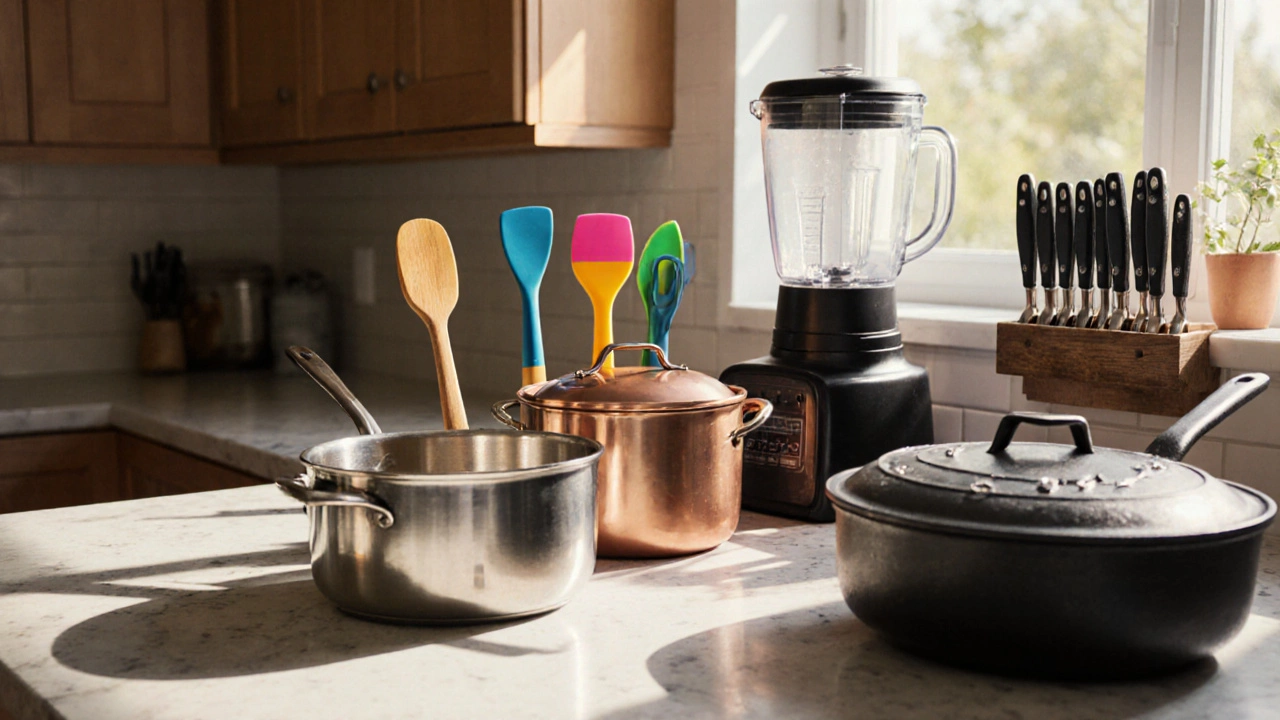Eco-Friendly Bakeware: Sustainable Kitchen Essentials
When talking about bakeware, the collection of pans, trays, molds and dishes used for baking, roasting and broiling. Also known as ovenware, it plays a central role in any kitchen routine. The market now offers ceramic bakeware, durable, heat‑responsive dishes made from natural clay that distribute temperature evenly and silicone molds, flexible, non‑stick forms ideal for cupcakes, loaves and specialty shapes. Both options replace traditional non‑stick coatings that can release chemicals at high heat, making them a healthier choice for families and a smarter move for the planet.
Choosing the right bakeware involves three core attributes: material safety, energy efficiency and lifespan. Recycled aluminum pans, for example, retain the excellent heat conductivity of virgin aluminum while reducing mining waste. Ceramic pieces score high on safety because they are free of PTFE and PFOA, and they retain heat longer, which can lower oven temperature and save energy. Silicone molds excel in energy efficiency simply by eliminating the need for added greasing agents, letting you bake with less fat and fewer calories. These attributes intersect with the broader concept of a sustainable kitchen, a cooking environment that minimizes waste, uses renewable resources and cuts down on energy consumption. When you pair eco‑friendly bakeware with proper storage solutions—like stackable shelves or airtight containers—you extend the life of your tools and keep ingredients fresh, echoing the storage‑focused advice found in many of our home‑improvement articles.
How to Pick the Best Eco‑Friendly Bakeware for Your Needs
Start by matching the bakeware material to the most common recipes you prepare. If you bake breads and pizzas regularly, a heavy‑duty recycled aluminum sheet offers quick, even browning. For delicate pastries, silicone molds provide the gentle release you need without extra butter. Ceramic trays are a go‑to for casseroles and roasts because they hold heat long after the oven cycles off, which can reduce cooking time and lower overall energy use. Consider the size and shape of your oven as well—some ceramic dishes can be bulky, while silicone pieces fold flat for easy storage, a point highlighted in our guides on maximizing small kitchen spaces. Finally, check for certifications such as GreenGuard or FSC, which signal that the product meets strict environmental standards.
Below, you’ll find a curated list of articles that dive deeper into related home topics—like smart shelving for kitchen organization, sustainable material choices for household items, and practical guides for selecting long‑lasting home goods. These pieces will help you build a cohesive, eco‑conscious living space where every bakeware choice fits into a larger strategy of waste reduction, energy savings, and healthier cooking. Ready to explore the full range of resources? Scroll down and discover the practical tips, product comparisons and step‑by‑step advice that will empower you to upgrade your kitchen the smart, green way.
-

What Does Kitchenware Mean? Definition, Types & Buying Tips
Learn what kitchenware really means, its main categories, materials, history, buying guide and care tips in a clear, practical guide.
